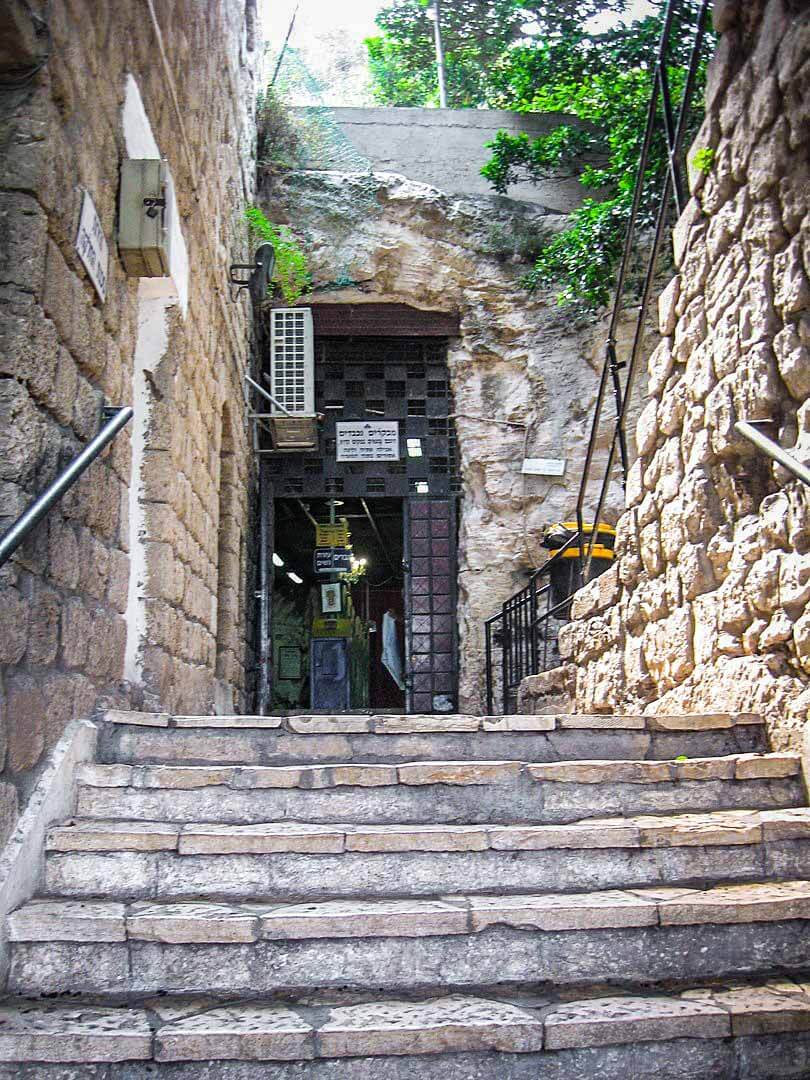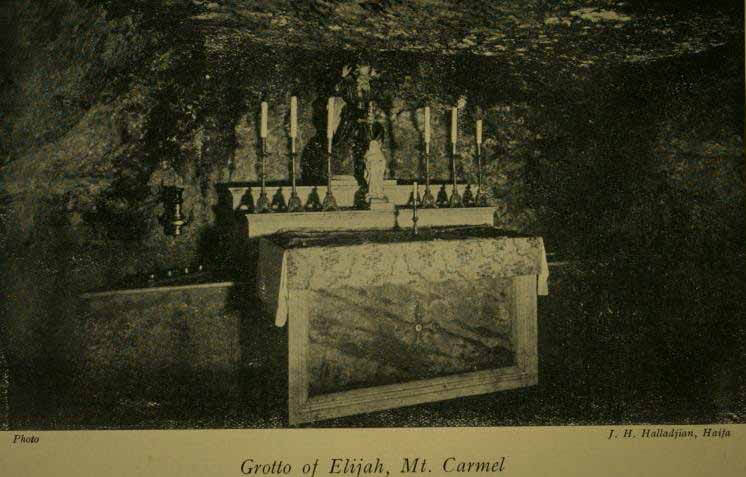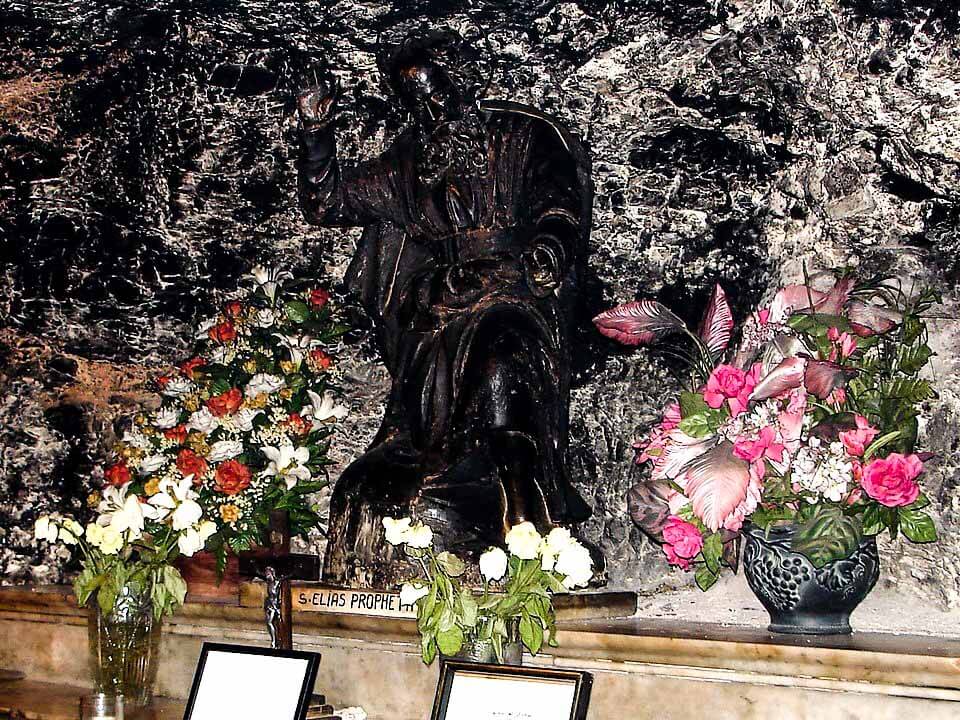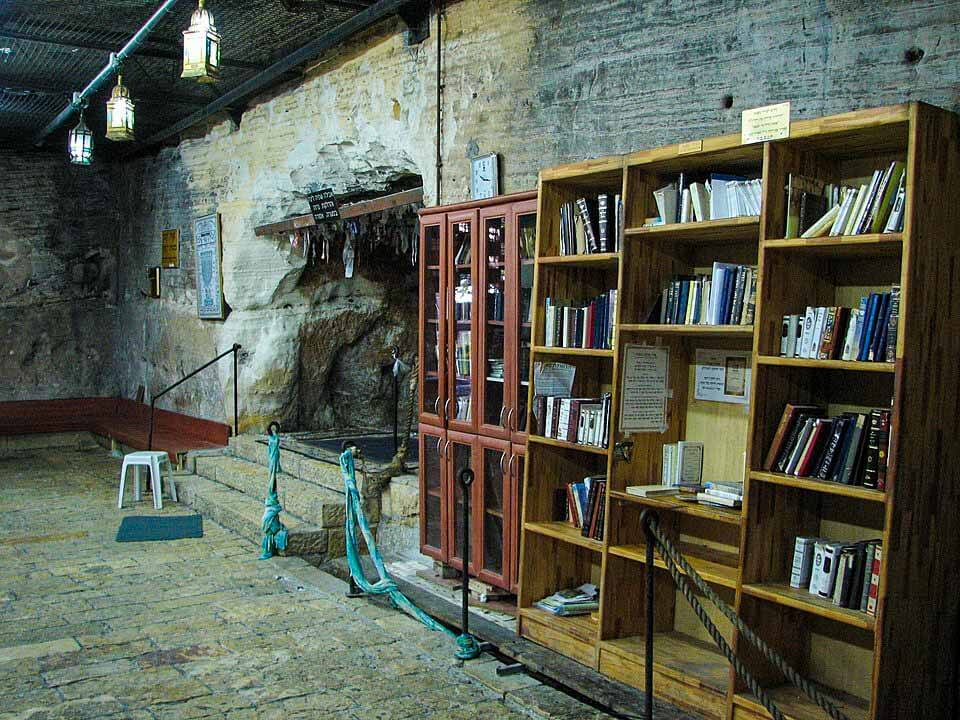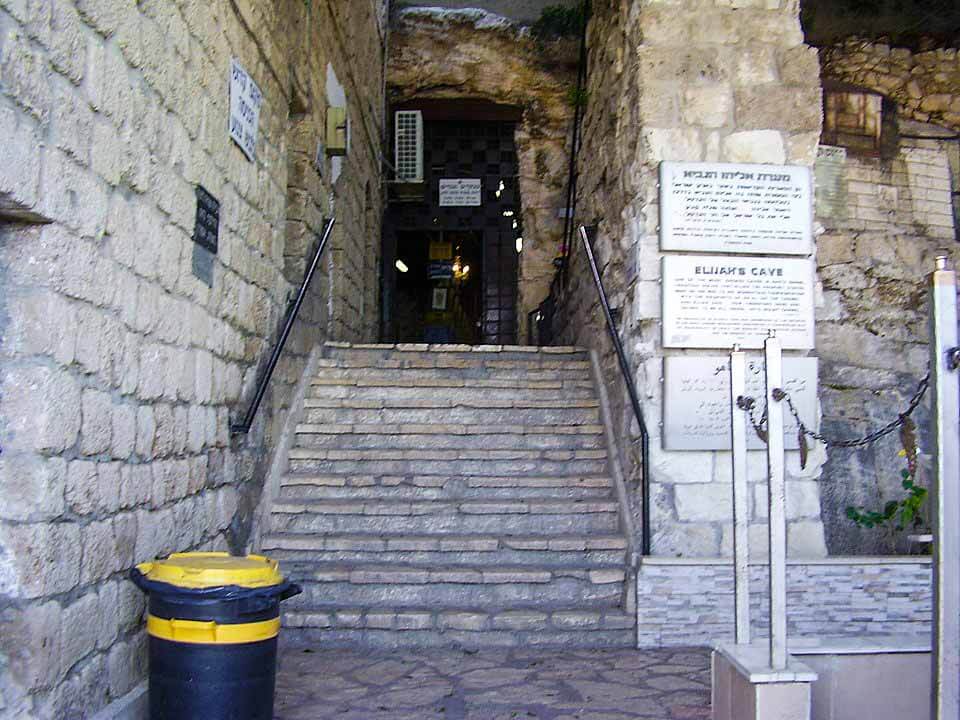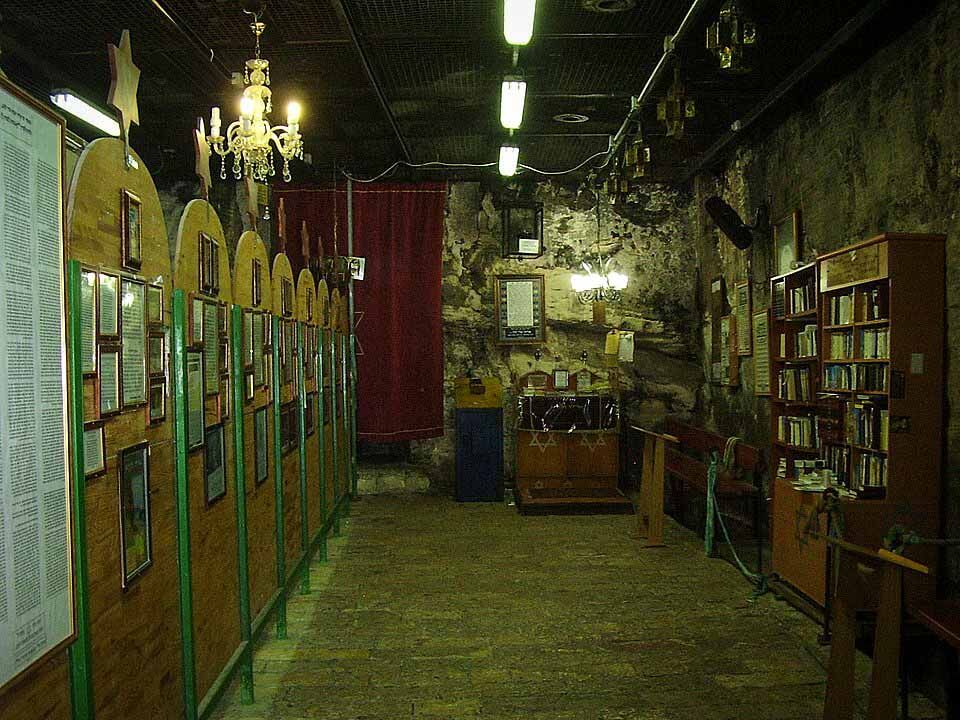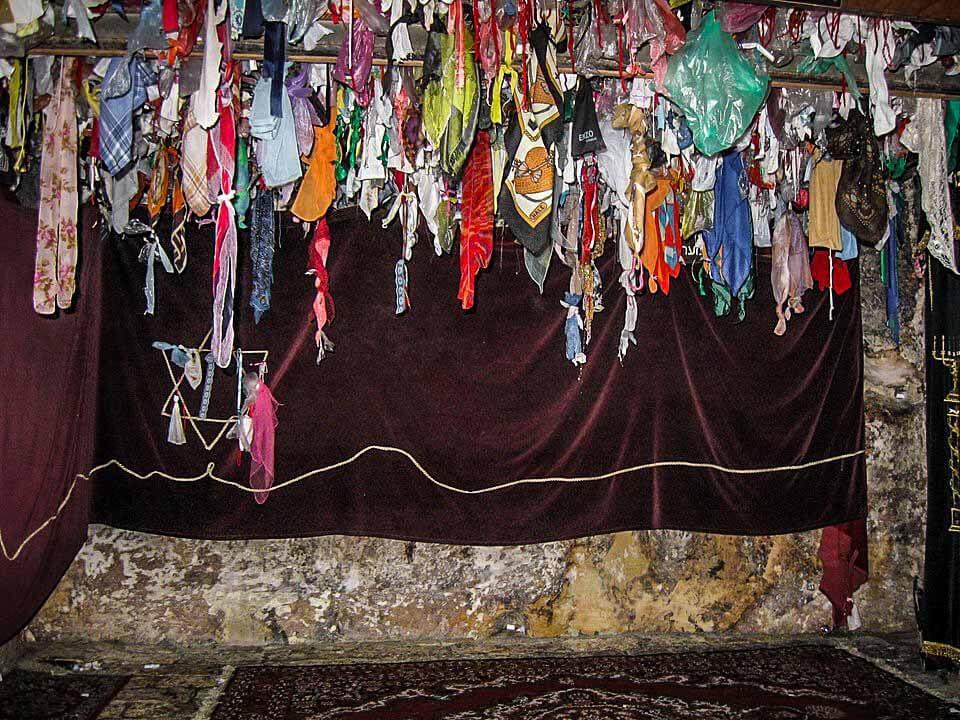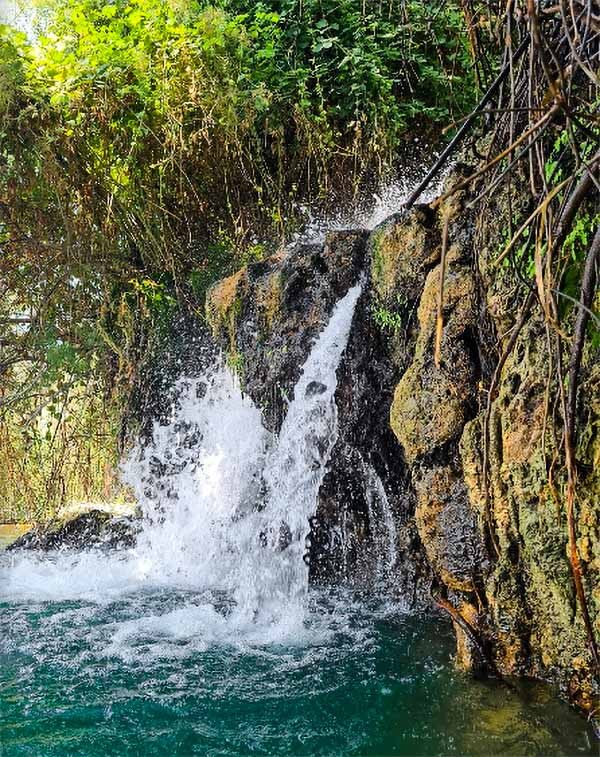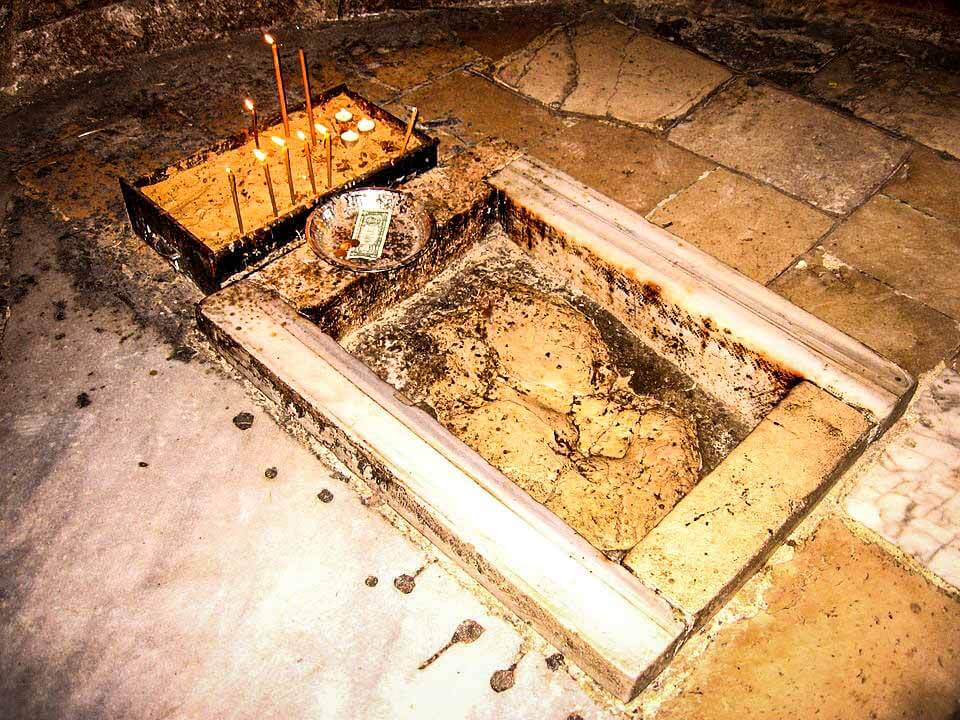Haifa, Israel Occupied Palestine
Coordinates: 32.829909, 34.969658
The Cave of Hz. Ilyas عليه اسلام is a grotto that appears in the Bible, where the prophet Ilyas عليه اسلام took shelter during a journey into the wilderness (1 Kings 19:8).
The exact location of the cave is unknown.
There is a “Cave of Elijah” on Mount Carmel approximately 40 m above sea level in Haifa.
For centuries it has been a pilgrimage destination for Muslim, Christian and Jewish people.
Another cave associated with Elijah is located nearby, under the altar of the main church of the Stella Maris Monastery, also on Mount Carmel. The name of the cave is also known as el-Khader in Arabic
Story in Bible
In the Books of Kings the old testament prophet Hz. Ilyas عليه اسلام takes shelter in a cave on Mount Horeb after traveling for 40 days and 40 nights. Upon awakening, he is spoken to by Allah.
Before an assembly on the summit of Mount Carmel, Hz. Ilyas عليه اسلام calls on the priests to seek fire from their God Baal to light a sacrifice.
When Baal fails to respond to their pleading, Hz. Ilyas عليه اسلام rebuilds the ruined altar of the Lord and offers his own sacrifice. Immediately, fire from heaven consumes the offering, even though it had been soaked in water.
After that Hz. Ilyas عليه اسلام ordered the execution of all priests of Baal. Enraged from this news vruel queen Jezebel threatens to kill Hz. Ilyas عليه اسلام.
Hz. Ilyas عليه اسلام flees to Beersheba in Judah, continues alone into the wilderness, and finally sits down under a shrub, praying for death.
He than travels for forty days and forty nights to Mount Horeb, where Hz. Musa عليه اسلام had received the Ten Commandments.
He than seeks shelter in a cave which today is known to be this Cave.
For reading the whole story visit Site of Execution of Priests of Baal on Jabal Al-Karmil (Mount Carmel)
Description of Cave
Hz. Ilyas عليه اسلام lived in Palestine around 870 B.C. In 12th century the Carmelites raised a church which housed a Cave of Elijah which they believed to be the cave where Elijah lived.
The Cave of Hz. Ilyas عليه اسلام is on the grounds of the Stella Maris Monastery on Mt. Carmel and is located underneath the Chapel / Church built by the Carmelites at the site of the founding of their order.
This Cave marks the traditionally accepted location of the Cave where the Prophet Ilyas عليه اسلام , fleeing persecution from the pagan queen, hid in the cave on Mt. Carmel and heard the “still, small” whisper of Allah in the wind.
The cave itself is rather small and full of worshipers. So it is a bit difficult to reach it and see it. Women and men have separate areas at the cave.
Hz. Ilyas عليه اسلام is venerated by Muslims, Jews and Christians all of whom come as pilgrims. Writings left by pilgrims in past centuries can be seen on the cave walls.
Cave in Historical sources
“The Cave of Elijah” has been presented primarily as part of Mount Carmel in the works of travelers, historians, pilgrims and other visitors.
Ioannes Phokas, a pilgrim who supposedly went to the cave in 1185 writes: “… After these (places) there is Mt. Carmel, … At the end of the ridge of Mt. Carmel facing the sea, there is the cave of the Prophet Elijah, …”
A Jewish pilgrim who supposedly visited the cave during the period between 1270 and 1291 claimed: “There on the slopes of Mt. Carmel is a cave, and there the synagogue dedicated to Elijah, be he remembered for good. Above the cave, on the top of the mountain, there is Elisha’s Cave.”
Know This
The cave can also be reached by car: drive along the coast road (Sderot HaHagana), and beside the Naval Museum turn on to Allenby Road (Derekh Allenby)). Cave of Hz. Ilyas عليه اسلام is situated adjacent to the turn from Sderot HaHagana into Allenby Road.
Note: Some of the information in this article comes from Jewish sources

